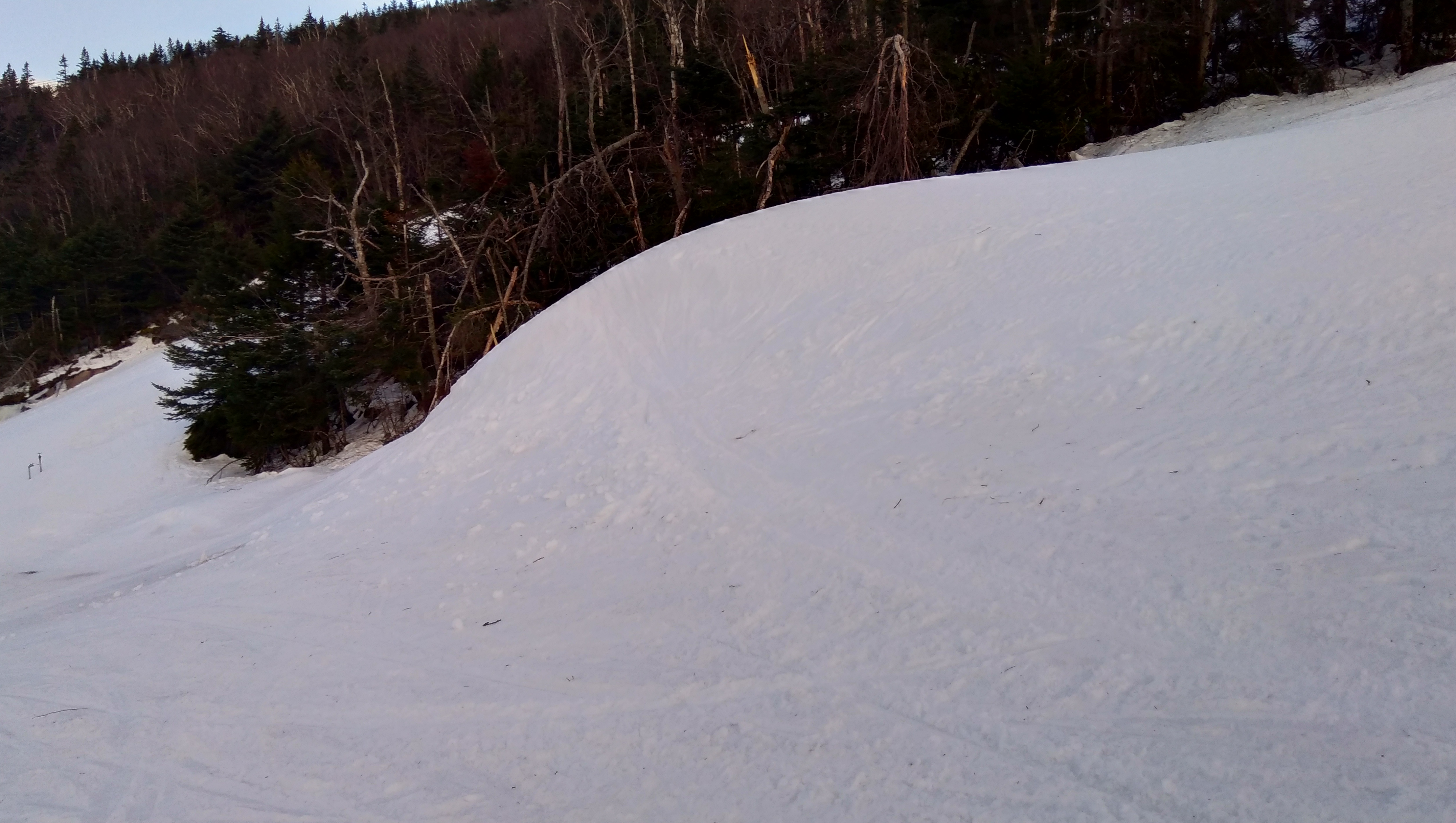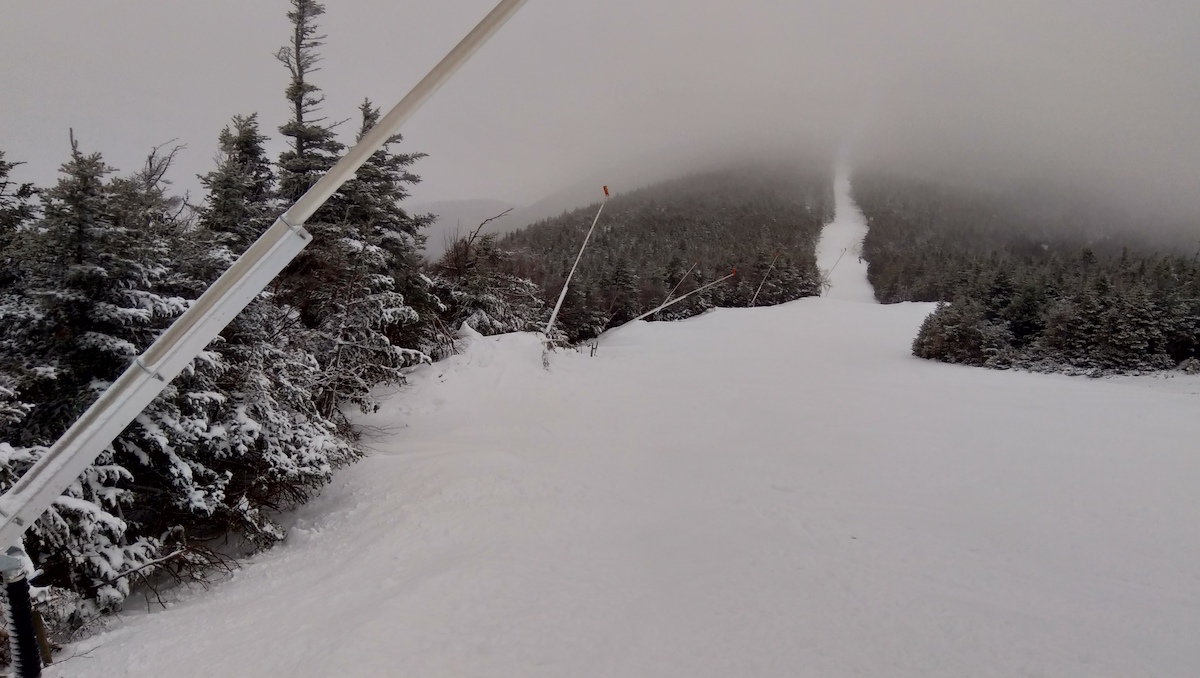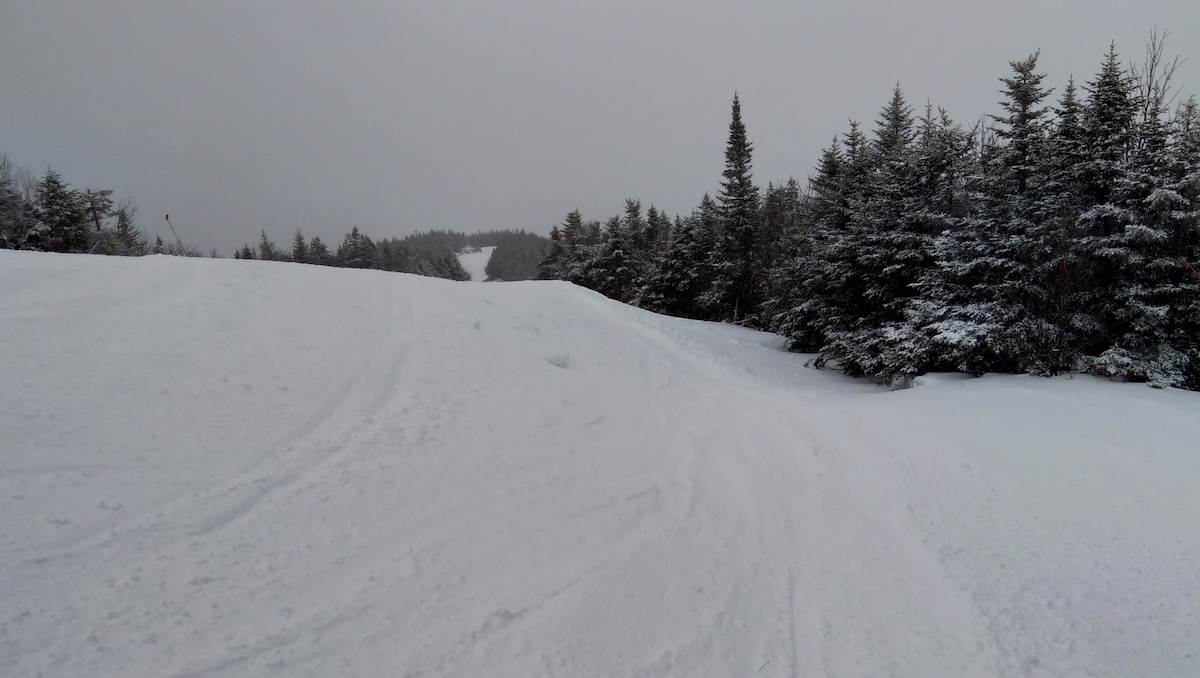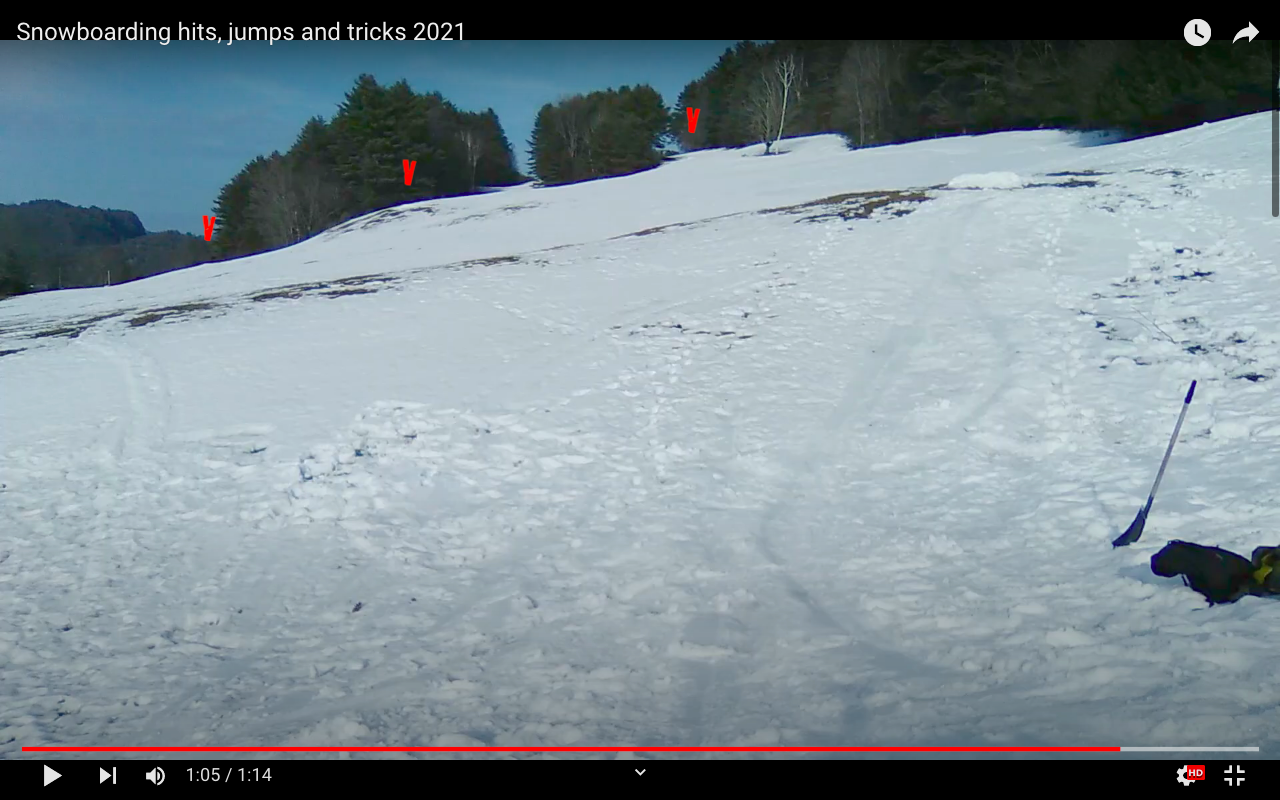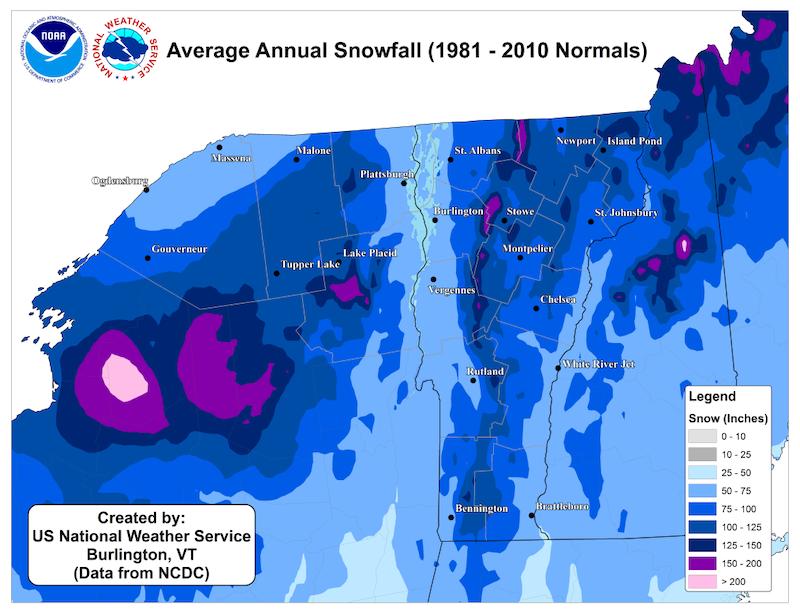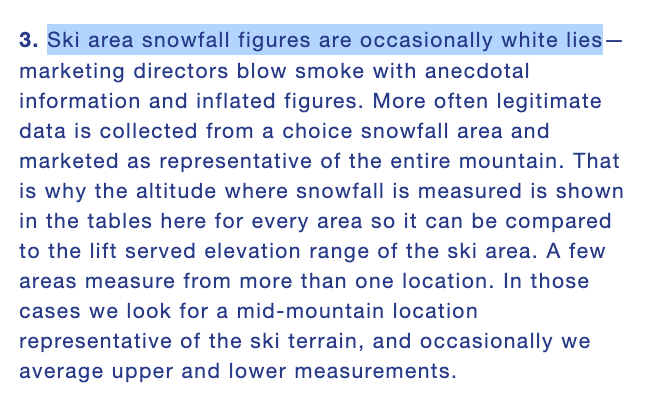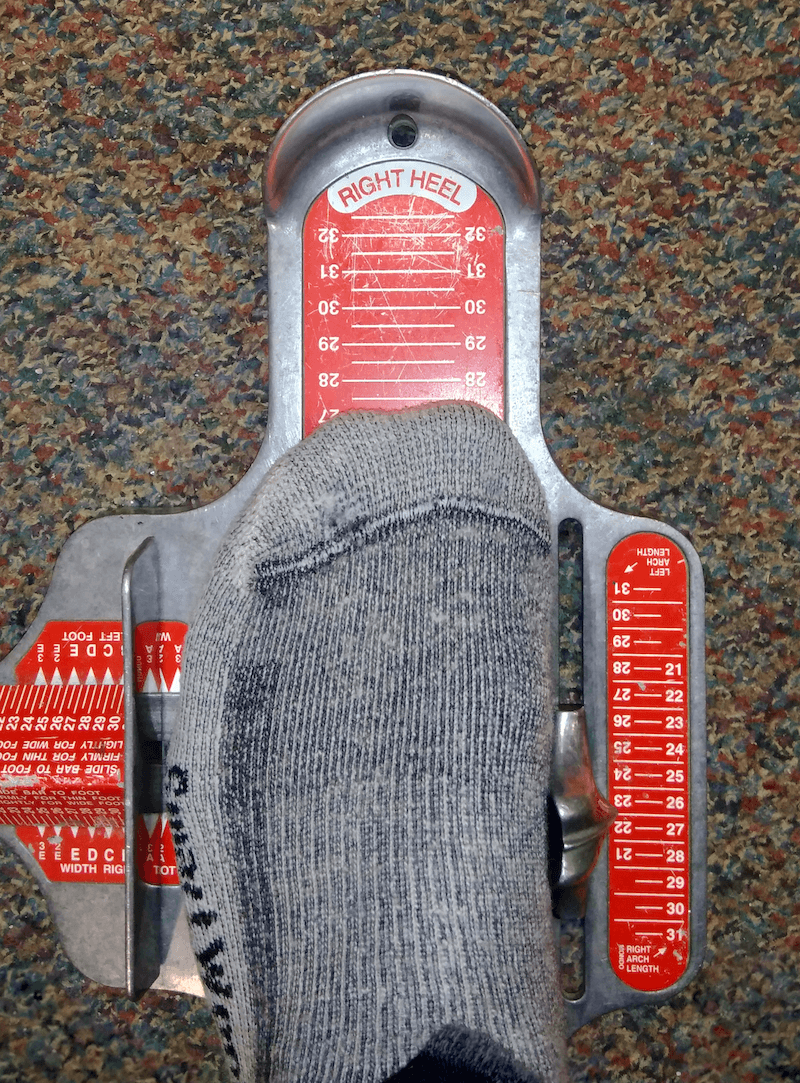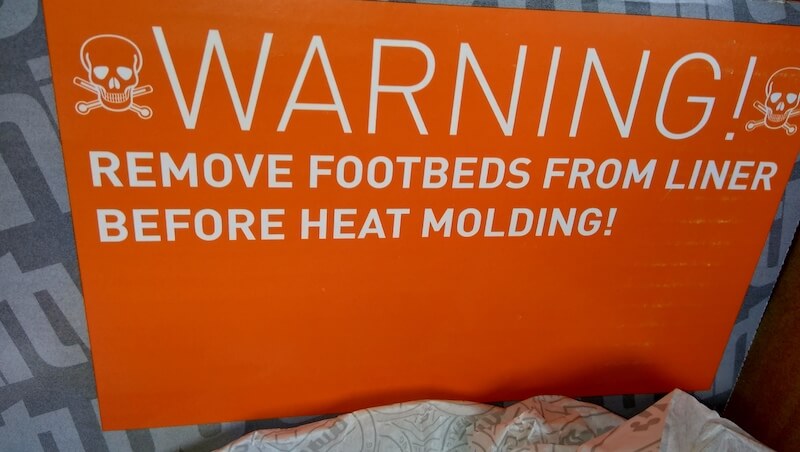This is a review of the Ride Fuse snowboard boot. I bought this boot in 2023 to hopefully be the solution to my old Thirtytwo TM-3 boots. And I just added an update here on these boots in 2024 below.
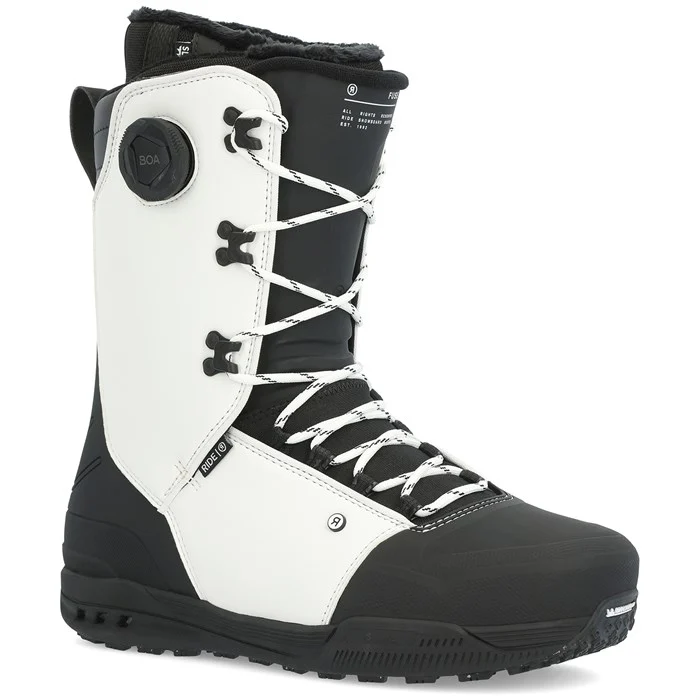
I first got the 8.5 Ride Fuse boot which was the same size as my previous boots, but after wearing it around my work I figured it was going to pack out and get more spacious. It definitely felt and looked bigger than the same size in my Thirtytwo boots.
So I looked a little longer and eventually found a size 8 and got them. I didn’t really like the blue color way much so I ordered some other blue laces that thought would go better than the white ones that came with it.
Ride Fuse boots are pretty stiff (8-10) out of the box for a freestyle boot.
They felt awkward and so I would wear them for an hour or two and then go back to my old 32 boots.
I think the Ride Fuse boots could get better, but as they were breaking in I found my self trying to customize them more by getting additional insoles to take up space. My feet are weird and my ankles are skinny which leads to some boot fitting issues.
With the size 8 Ride Fuse I noticed my foot was starting to move around in the boot so I got some heel shims then they kinda still moved and there were pressure points on the widest side of my foot where I developed bunions near my pinky toe probably from wearing my TM-3’s daily working 8-10 hours in the park.
So I already went through like two seasons of ongoing boot modifications with my TM-3’s so I started to think I would sell them on ebay.
But then I changed my mind after putting the old TM-3’s on again. But too big after a few weeks of using them so I got the 7.5.
What I liked about the Ride Fuse and it’s features
Pros:
- It’s got an articulating cuff so when you flex the boot it doesn’t distort.
- It’s mostly lace and has a boa for the tongue and inner liner.
- The inner liner is different as it doesn’t have the traditional central tongue. It kinda wraps and is called the Mobile Trap Wrap Liner .
- The rubber sole is pretty good for traction – Michelin® Hybrid Fiberlite Sole. Sometimes I thought the gripped my board better 1 footing than the TM-3’s but then others I thought maybe the TM-3’s got better traction walking in snow. But still good.
- I like the exterior tongue on it – called Slime tongue which is supposed to provide dampening.
- It’s a low volume boot. It has much less volume especially in the heel area of the boot compared to the TM-3.
- It’s a fairly lightweight boot. It felt about half the weight as my TM-3’s.
Cons:
- It’s not as heavy duty as my TM-3’s.
- They are part BOA. Which is fine for some but they give me anxiety that they will break. They have not broke yet although I met a guy on ebay who said the dials on his broke.
- Liners are kinda wimpy. They will pack out in 30 days and you’ll gain half to a full size. Probably pretty typical of snowboard boot liners (except TM-3‘s) although they have the wrap instead of traditional tongue which I liked at first although they did cause some light bruising on my shins.
- Not very warm. I had a coworker with Ride Insano boots who was always going in to warm up his toes during the season.
- They are not very waterproof. I’ve had 2 pairs of these and both in wet snow and rain would get wet and I would have to take the liners out (daily in spring) to dry. I think there was a leak in the seam of the sole.
I tried on a lot of boots before buying these online. And I actually never tried the Fuse on in a shop before ordering online. But I tried the K2 Maysis, other K2 boots, the Ride Lasso, Ride Lasso Pro, Ride Deadbolt, some Northwave boots, Deeluxe boots, Team ID and others, Burton Tourist, Salomon Echo, Salomon Launch, Salomon Dialogue, Rome boots (no articulating cuff) and more.
None of them really stood out however I tended to think the ski company boots (surprisingly) like Ride, K2 and Salomon fit better.
I read about the Fuse and heard good reviews on them and I remember a rep for Mervin boards saying to try on a lot of boots and find a company that has a mold that fits your foot better.
So it seemed like all the ski companies were fitting better and I can tell you to at least size down a half size for these boots and maybe all of Ride boots and for K2 boots too as they are made by the same company. In my experience all the K2 and Ride boots ran about a half size large.
I spent about 10 hours in the Ride Fuse boots and will probably sell them as they loosened up and I even wonder what a size 7.5 would feel like after the pack out or if I could even get into them. I mean in Thirtytwo boots my toes were crammed in the front and hurting but there was empty space around the rest of the foot that was hard to keep tight.
Measure with the Brannock device if you haven’t.
That’s a good starting point. I got one foot that is a 27mm (size 9) and another a 26.5 (size 8.5) and was told my volume is a 7.5 (skinny lower ankle heal area) so it’s complex fitting a boot.
I mean my toe space was good with the Fuse but they were loosening up and getting more spacious and my foot was moving around as mentioned before.
Update 2024 on the Ride Fuse
So I was trying to sell these on Ebay and then the start of this season I wore my old TM-3’s one day and got a black toe so I thought I am not doing that again and I took the Ride Fuse’s back out of the box and decided I needed to wear them.
So initially these were uncomfortable. I put some heel wedges in them to take up some space and another intuition insole under my left foot to take up some more space.
So these are stiff and I didn’t heat mold them and the liner right at the top at my shins hurt for 10-14 days. They got kinda red and bruised.
I also went from not riding to wearing these 8 hours a day almost every day working in the park and riding.
The liner I am not sure I like. At first I thought it looked cool but learned later that it distorts a bit when you flex. It kind of needs an articulating cuff like the shell has so it doesn’t do that. But you can only see this if you take the liner out of the boot and then do some bends.
And my ankles are skinny so it might not distort like it did for me. I got some pressure points in there that were caused by that.
So heat mold them if you can probably. Now they are a little better. My damn left foot is a pain to fit. It’s got less volume and width than my right foot but is a little longer.
I think in the last week or so they have improved some. But for a while there back I was trying on other boots.
They were really stiff at first and I couldn’t ride well, but they broke in. The bigger you are probably the faster they will break in. I am just over 150lbs.
So support is good, traction seems ok. As far as comfort goes not very, but improving ask me later how it went.
Overall I met other people that were pretty happy with this boot and on their 2nd or 3rd pair. So if it works for you it works. Definitely size down a half-size or go to a shop to try some on or buy multiple pairs online.
It’s a lightweight and low volume boot which is a plus. They are pretty stiff feeling which can take some getting used to. They are not a high-end boot but maybe med-high range and still pretty stiff. Like most boots do they will packout and loosen up with time.
Learn more about the Ride Fuse snowboard boot on Evo.com.
Related:
- TM-3 Thirtytwo boot
- Ride Fuse size 8 (used for a month)

